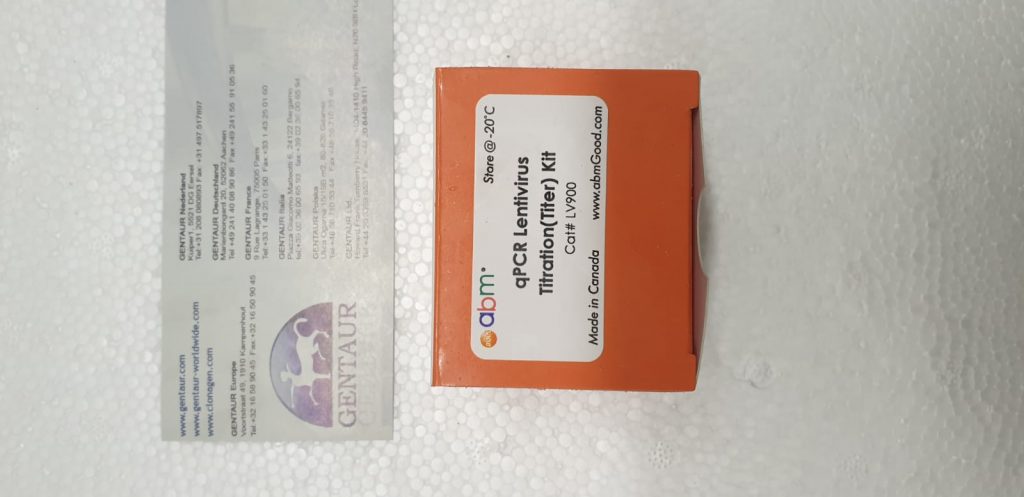We examined anti-SARS-CoV-2 IgG and IgM antibodies in 45 serum samples from 26 patients with COVID-19, who were admitted in our hospital by using three different ELISA kits. All patients had pneumonia at admission, and 7 patients required mechanical ventilator support and grouped in severe case. Anti-SARS-CoV-2 IgG and IgM antibodies turned to be partially positive between the 6th and 10th days, more than 84% positive between the 11th and 15th days, and 100% after the 16th day.
One ELISA kit revealed poorer sensitivity for anti-SARS-CoV-2 IgM antibody. Negative conversion of IgM antibody was not observed in the 30th day in our cohort. All three ELISA kits showed no false positive reaction for negative serum samples. Between severe and moderate cases, there was no significant difference in the trends of anti-SARS-CoV-2 IgG and IgM antibody.
Preparation of ELISA and Lateral Flow Kits for rapid Diagnosis of Mycoplasma gallisepticum in Poultry
Avian mycoplasmas were mainly the cause of poultry industry economic losses; reduced meat and egg production and increases the antibiotic treatment cost. Mycoplasma gallisepticum (MG) infection is designated as infectious sinusitis of turkeys and chronic respiratory disease of chickens (gasping, depression, semi closed eyes, infraorbital sinuses edema and decrease in egg production). This study aimed to prepare, evaluate and Compare in-house ELISA kits and lateral flow assay (LFA) from a local strain of MG with commercial ELISA kits and PCR consequently.
A total of 54 samples (27 tracheal swabs, 10 trachea and 17 lung) and 50 serum samples collected from birds suffering from chronic respiratory disease were tested by prepared in-house ELISA, commercial ELISA kits, PCR and LFA; a high correlation coefficient between in-house ELISA using whole antigen or sonicated antigen and commercial kit was recorded.
Lateral Flow assay (LFA) performance indicate a low sensitivity (77.5%) but maintain a high specificity (92%) compared to PCR. The in-house ELISA kits and LFA prepared could be used as a fast diagnostic technique for detection of MG in Egypt. According to the available knowledge the prepared LFA for diagnosis of MG infection in chickens was developed for the first time in Egypt.
Commercial fish ELISA kits have a limited capacity to detect different fish species and their products.
Fish is a major food and allergen source, requiring declaration on packaged food, often ensured by employing ELISAs. Over 1,000 different fish species are traded and consumed worldwide, increasingly provided by aquaculture. Up to 3% of the general population are at risk of sometimes fatal allergic reactions to fish, requiring strict avoidance of this food commodity.
The aim of this study is to evaluate the capacity of three commercially available ELISA tests to detect a wide variety of bony and cartilaginous fish and their products, essential to ensure reliable and safe food labeling.The detection of 57 bony fish ranged from 26% to 61%. Common European and North American species including carp, cod, and salmon species demonstrated a higher detection rate as compared to those from the Asia-Pacific, including pangasius and several mackerel and tuna species. Among the 17 canned bony fish products, only 65% to 86% were detected, with tuna showing the lowest rate.

None of the cartilaginous fish (n=9) as well as other vertebrates (n=8) or shellfish (n=5) were detected.We demonstrate a limited capacity of three commercial fish ELISA kits to detect fish and their products. The complexity of fish as an increasing utilized protein source raises the urgent need for improved detection methods, crucial for the food industry to provide safe seafood products and comply with international legislations.
Assessing the potential cross-reactivity using a commercial heartworm ELISA kits of serum from dogs naturally infected with Onchocerca lupi.
Onchocerca lupi is an emerging zoonotic parasite of dogs, endemic to the southwestern USA and areas of the Old World. Currently, there are no specific serological diagnostic tests able to detect O. lupi infection. Recent literature has demonstrated that commercially available heartworm antigen tests, despite being highly sensitive, may cross-react with infections by other filarid nematodes.
There is no information on potential cross-reactivity of such tests in serum of dogs infected with O. lupi. Our objective was to assess serum samples of dogs naturally-infected with O. lupi for potential cross-reactivity before and after heat-treatment using a commercial heartworm ELISA kit. We obtained serum from 23 dogs naturally-infected with O. lupi. These dogs presented with ocular disease, and were consulted to schedule either surgical removal of ocular nodules due to infection or enucleation.
Samples were tested in triplicate using the DiroCHEK® Heartworm Antigen Test kit (Synbiotics Corporation, Zoetis, Kalamazoo, MI, USA) following the manufacturers’ protocol pre- and post-heat-treatment. Samples were heat-treated using a dry heat block at 103 °C for 10 min and then centrifuged at 1818×g for 20 min. Out of a total of 23 dogs, 19 (82.6 %) had no antigen detected regardless of heat-treatment, three dogs tested positive before and after heat-treatment, and a single dog turned positive after heat-treatment.
These three dogs that were positive before and after heat-treatment were confirmedly co-infected with Dirofilaria immitis by the veterinarians responsible for these cases, and we were unable to get the history or follow up with the dog that turned positive post-heat-treatment only.
Our data suggest that O. lupi infections should not result in false-positives when using the DiroCHEK® in dog serum, before or after heat-treatment. Dogs with clinical ocular onchocercosis that test antigen-positive in DiroCHEK® are likely co-infected with D. immitis, and should be further tested, including evaluation of microfilariae in blood and diagnostic imaging.
[Linking template=”default” type=”products” search=”Gentaur Rat Resistin ELISA Kits test” header=”3″ limit=”122″ start=”3″ showCatalogNumber=”true” showSize=”true” showPrice=”true” showDescription=”true” showAdditionalInformation=”true” showImage=”true” showSchemaMarkup=”true” imageWidth=”” imageHeight=”” site=”www.gentaur.pl” linkProductCatalogNumber=”true”]
If heartworm infection is confirmed, the animals should be enrolled in the recommended treatment protocol in accordance to the guidelines of the American Heartworm Society or other local organizations.

